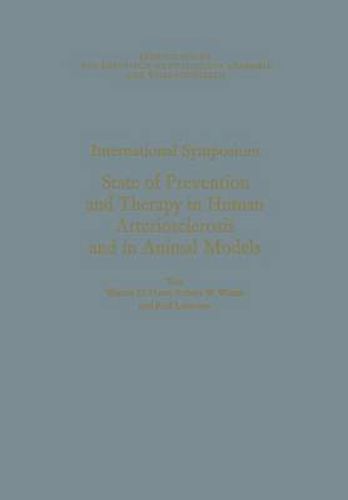Readings Newsletter
Become a Readings Member to make your shopping experience even easier.
Sign in or sign up for free!
You’re not far away from qualifying for FREE standard shipping within Australia
You’ve qualified for FREE standard shipping within Australia
The cart is loading…






This title is printed to order. This book may have been self-published. If so, we cannot guarantee the quality of the content. In the main most books will have gone through the editing process however some may not. We therefore suggest that you be aware of this before ordering this book. If in doubt check either the author or publisher’s details as we are unable to accept any returns unless they are faulty. Please contact us if you have any questions.
It is suggested that the stenosing effects of atherosclerosis may be offset by regression of the lesion, senescent dilatation of the arterial wall and by enlargement of anastomotic channels. Regression is slow and such inertia is attributed to: absence of cholesterol catabolic enzymes; disproportion of the ratio of LDLlHDL; physical inaccessibility of crystalline cholesterol; and relative absence of reticuloendothelial phagocytes. Moderate dilatation of the human coronary arterial wall with advancing age seems to compen- sate for the inward encroachment of atherosclerosis on the lumen, hence the status quo ante may be preserved. Severe atrophy with gross dilatation (ectasia) leads to haemodynamic difficulties with slow circulation as a result of marked fall in perfusion pressure. Such overdilated ectatic coronary arteries are particularly liable to undergo thrombosis. References Adams, C. W. M., and Bayliss, O. B. (1976a): Detection of macrophages in atherosclerotic lesions with cytoduome oxidase. Brit. J. Exp. Pathol. 57, 30 to 36. Adams, C. W. M., and Bayliss, O. B. (1976b): Succinic dehydrogenase and cytochrome oxidase in arterial, venous and other smooth muscle. Atherosclerosis 23, 367 to 370. Adams, C. W. M., Knox, J., and Morgan, R. S. (1975a): The resorption rate of atheroma lipids in situ and implanted subcutaneously. Atherosclerosis 22, 79 to 90. Adams, C. W. M., Morgan, R. S., and Bayliss, o. B. (1973): No regression of atheroma over one year in rabbits previously fed a cholesterol or enriched diet. Atherosclerosis 18, 429 to 444.
$9.00 standard shipping within Australia
FREE standard shipping within Australia for orders over $100.00
Express & International shipping calculated at checkout
This title is printed to order. This book may have been self-published. If so, we cannot guarantee the quality of the content. In the main most books will have gone through the editing process however some may not. We therefore suggest that you be aware of this before ordering this book. If in doubt check either the author or publisher’s details as we are unable to accept any returns unless they are faulty. Please contact us if you have any questions.
It is suggested that the stenosing effects of atherosclerosis may be offset by regression of the lesion, senescent dilatation of the arterial wall and by enlargement of anastomotic channels. Regression is slow and such inertia is attributed to: absence of cholesterol catabolic enzymes; disproportion of the ratio of LDLlHDL; physical inaccessibility of crystalline cholesterol; and relative absence of reticuloendothelial phagocytes. Moderate dilatation of the human coronary arterial wall with advancing age seems to compen- sate for the inward encroachment of atherosclerosis on the lumen, hence the status quo ante may be preserved. Severe atrophy with gross dilatation (ectasia) leads to haemodynamic difficulties with slow circulation as a result of marked fall in perfusion pressure. Such overdilated ectatic coronary arteries are particularly liable to undergo thrombosis. References Adams, C. W. M., and Bayliss, O. B. (1976a): Detection of macrophages in atherosclerotic lesions with cytoduome oxidase. Brit. J. Exp. Pathol. 57, 30 to 36. Adams, C. W. M., and Bayliss, O. B. (1976b): Succinic dehydrogenase and cytochrome oxidase in arterial, venous and other smooth muscle. Atherosclerosis 23, 367 to 370. Adams, C. W. M., Knox, J., and Morgan, R. S. (1975a): The resorption rate of atheroma lipids in situ and implanted subcutaneously. Atherosclerosis 22, 79 to 90. Adams, C. W. M., Morgan, R. S., and Bayliss, o. B. (1973): No regression of atheroma over one year in rabbits previously fed a cholesterol or enriched diet. Atherosclerosis 18, 429 to 444.